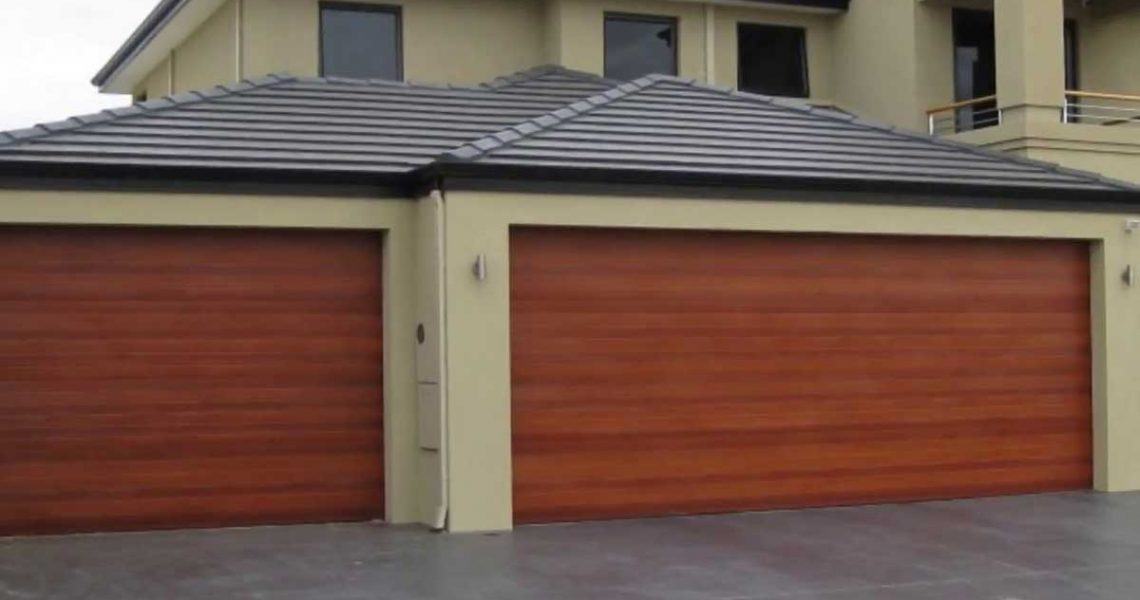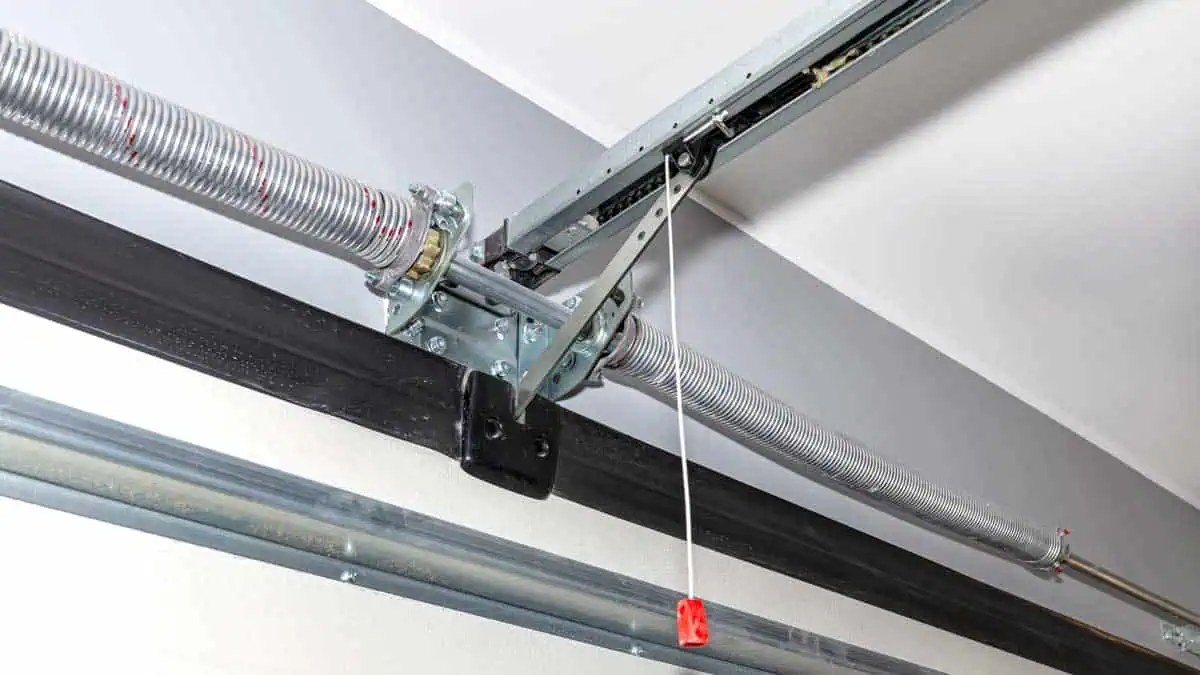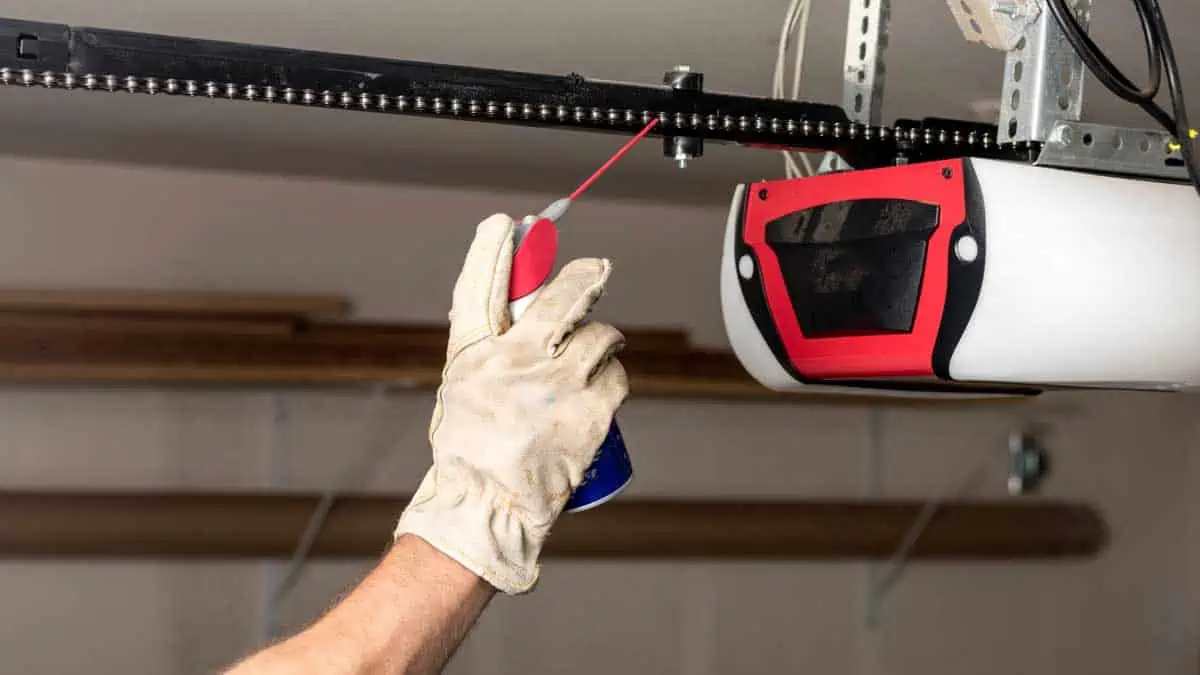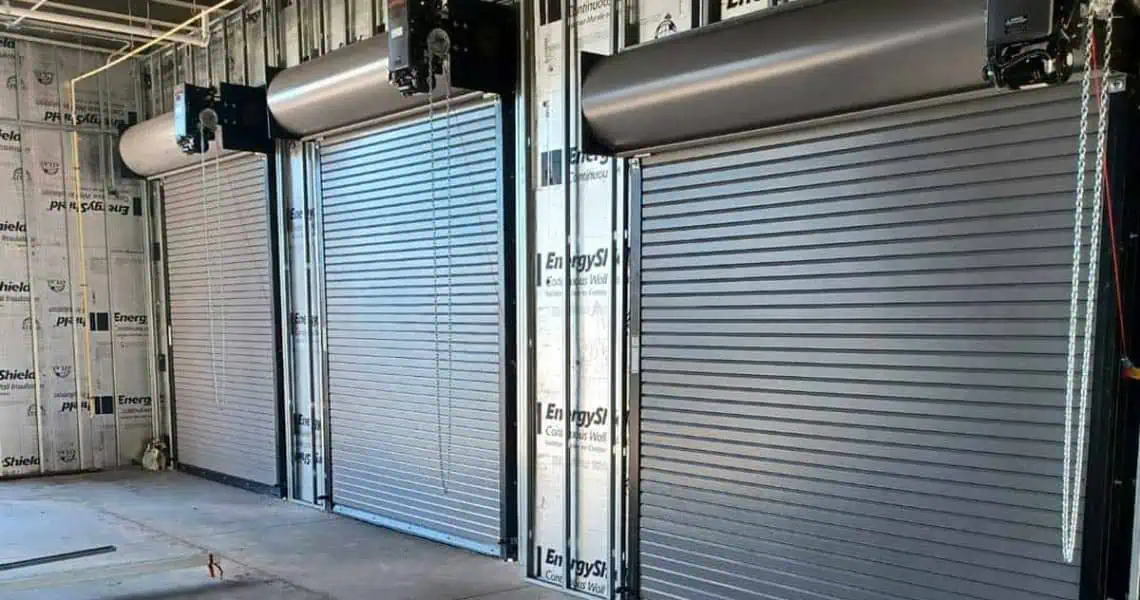Roll up doors are currently the most common type of garage doors that you’ll find on U.S. homes. It’s a trend for garage doors that provides a smooth lifting process, a cheaper door design, and not a lot of space taken up by the actual door.
If you decide to go with a roll up door, you’ll then have a number of different options in materials and designs. We’ll discuss roll up doors, as well as your options and the best way to maintain them.
Types of Roll Up Doors
Roll up garage doors often are made from steel that is formed into connected slats that roll up into a coil above the door. Alternatively, they might roll out flat above the door.
Doors that roll up into a single coil above the door are generally not used in residential garage settings. If you have a roll up door it is probably the kind that flattens out above your garage, just like a swing door would. This kind of door is known as a sectional roll up or an overhead roll up.
True roll ups, doors that end in a single coil above the door, are made from really thin materials in order to slat into the small coil at the top. You won’t find these in houses, but they are types of doors commonly used in business and mechanical situations. Typically, roll up doors cost less to set up, but you’ll pay more for the door over the long run through maintenance costs. They are generally heavier, and they use a jackshaft opener instead of an overhead opener.
However, sectional roll ups (overhead roll ups) are the residential version of the roll up. They end up in the same place that a swing garage door does when it opens, but they get there by running along a track instead of by swinging. Unlike true roll up doors, there’s no significant difference in the maintenance, insulation, and costs of a roll up door.
Should I Change My Door Type?
If you’re looking to replace your existing garage door, then you may have the option to change from a swing door to a sectional roll up, or vice versa. It really depends on the style that you’re looking for and what’s going to match your house. Keep in mind that a modern roll up door might not quite match the older house style, while a swing door might look out of place on a modern suburban house.
If you have a mid-century modern style, say, then you might be able to mix and match styles. While older houses generally have bigger swing doors, replacing that type of door with a roll up door can make your house seem a decade newer than it is. You might be able to increase the value and curb appeal, simply by signaling a newer house with a newer garage door! If you have a newer house, on the other hand, you can add class and character through a swing door.
Roll Up Door Materials
Roll up doors are commonly made of steel, but they also feature frosted plastic or a glass construction.
But if you’re in the market for a roll up door, you’ll also have a few other options. There are wood roll up doors that are made from thin sheets of wood. If you use a plywood or a hardboard skin, which is a less expensive solution, you’ll only get a warranty of about a year. Wood is an authentic, genuine look for a garage door, but it’s not the best material. Wood is liable to warping through heat and moisture, which can really impact your ability to raise and lower the door properly. You won’t get a long warranty on wood.
More common materials for roll up doors are steel and aluminum. Cheaper aluminum doors are largely gone, now replaced by more complex versions with frames and dent-resistant pieces. If you can spend a lot of money on a garage door, aluminum will be a great option. They don’t rust, they hold up for a long time, and they resist most weather conditions.
If you aren’t looking to spend a lot of money on a new door, then steel is a much better choice than aluminum. Steel is much cheaper than aluminum, but it’s also a lot tougher than a wood door. It might last for the lifetime of the hardware, and if you get steel that has fiberglass over the top, the door will also resist dents and rusting, giving you the benefits of aluminum.
Maintenance on Roll Up Garage Doors
Roll up garage doors can be difficult to maintain, even if they are made out of fiberglass or steel. If there is damage on a roll up door that cannot be easily fixed, then you’ll need to replace the whole door. If you have a single panel roll up door that is made out of wood, these doors are likely to get warped by moisture and repeated use over time. Steel doors are more likely to get dented, which then have to be replaced.
Installing a new roll up garage door is a tricky process. Multiple people have to fit the door onto the tracks at the same time to make sure things are lined up properly. While warping and denting can occur on a roll up garage door, the most common problem is that the tracks on either side become misaligned. Because you’re lifting heavy panels through a system of wires and bars, it takes just a small misalignment in order to throw your entire door off by quite a bit. These misalignment problems can cause further damage to the door or your garage if you continue to operate the system, so it’s best to get repair on it right away.
Ultimately, a well-maintained roll up door can last for a long time. It’s important to have it inspected annually, as well as to get service for it as soon as possible if something is off.





